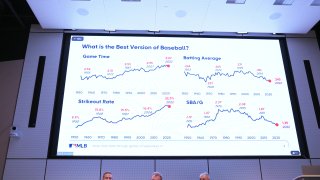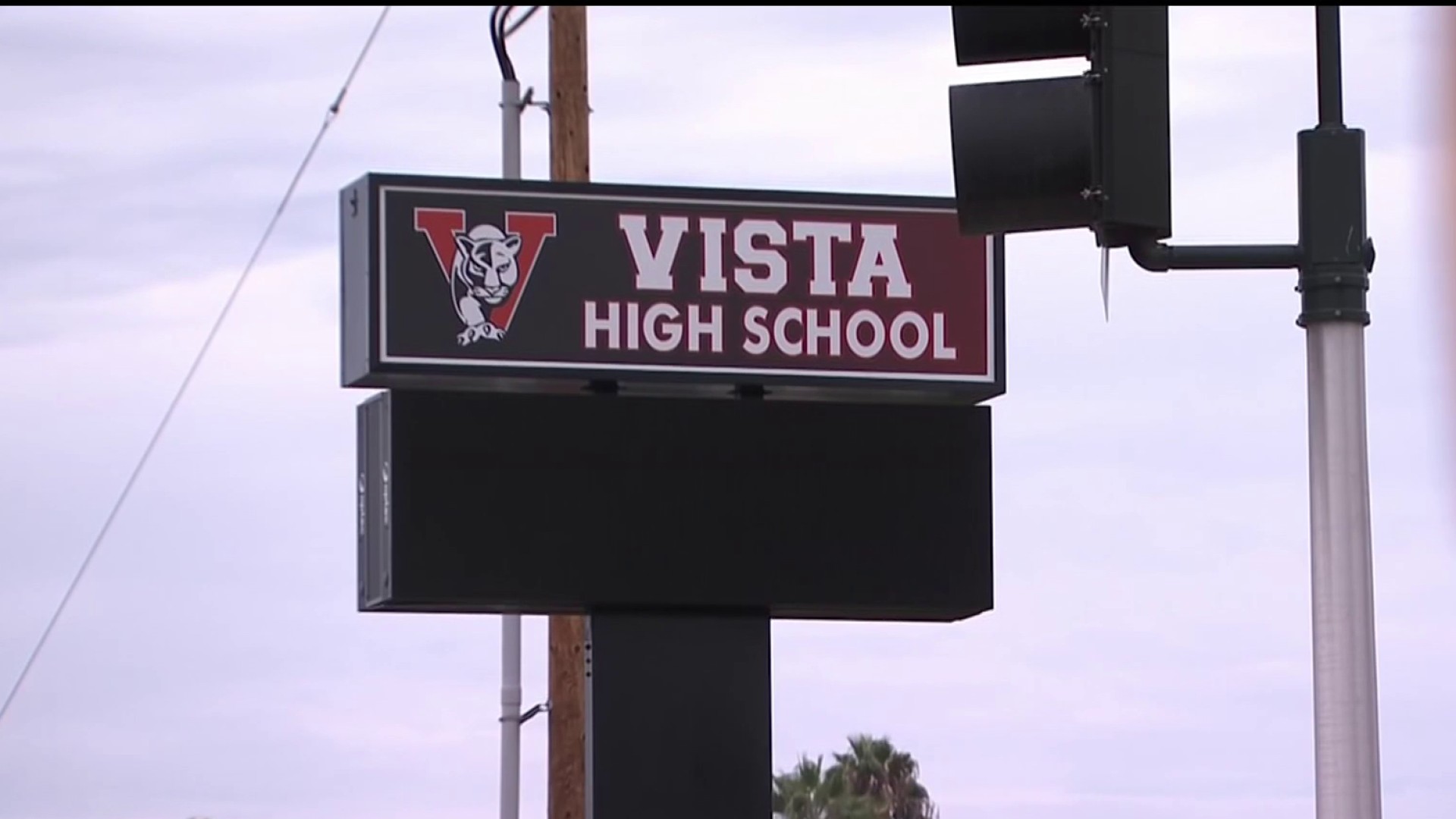
Traditionally a staunch resistor to change, Major League Baseball has needed a tune-up for years. Games have slogged on, now averaging well over three hours to complete, and fans have been turned off by the slower pace of play.
MLB isn’t just getting an oil change. They’re replacing the entire engine.
The league recently announced major rules alterations that will start in the 2023 season and three of them are getting the bulk of the attention: a pitch clock, banning the infield shift, and larger bases. We’ll start with the pitch clock.
There will be a 30 second time limit between batters, 15 seconds between pitches with the bases empty, and a 20-second timer with runners on. If a pitcher takes too long to begin his delivery he’s charged with an automatic ball. How do the pitchers feel about this? That depends on who you ask.
Get San Diego local news, weather forecasts, sports and lifestyle stories to your inbox. Sign up for NBC San Diego newsletters.
“Some guys it doesn’t affect at all because they work pretty quick. I tend to work pretty quick,” says Padres starting pitcher Joe Musgrove. “But there are times throughout the course of a game where your stuff’s not that sharp or you’re having trouble locating. I think taking that time between pitches really helps you get through those outings when you don’t feel you’re at your best.”
Trending Stories
The pitchers aren’t the only ones on a clock. If a hitter is not in the batter’s box and ready to go after eight seconds, he’s assessed an automatic strike. This system has been in place in the minor leagues and several hitters have “struck out” without even seeing a pitch because they weren’t ready in time.
According to FanGraphs, the average time between pitches this year is about 23 seconds. So, it shouldn’t take too long for big leaguers to figure this out.
“I don’t think it’ll be all that difficult once we make it our reality and just start working at it,” says Musgrove.
However, there is one aspect of the pitch clock that irks hurlers. They’re now only allowed two throws over to 1st base per plate appearance. Again, in the minors this rule has been big for the now nearly forgotten stolen base, with attempts and success rate both increasing significantly, but it goes beyond just swiping an extra bag.
“That stuff’s frustrating because when you face a team like we do with Arizona, they’ve got a lot of speed, a lot of guys that can run the bases, and keeping them close at first or keeping it in their minds that we will pick off at any time gives us better opportunities to get the double play balls, save some pitches, and get out of innings quicker,” says Musgrove.
The second big adjustment will be on the shift. Teams will no longer be able to stack one side of the infield with defenders. Under the new rule, players must keep their feet within the boundary of the infield dirt, and two infielders must be on either side of the bag at 2nd base.
Over the last decade the league-wide batting average on balls in play has dropped as balls that were once hits are instead gobbled up by an infield stacked to one side.
“Generally speaking, people pull ground balls, regardless if they’re an opposite field hitter or not,” says Padres IF/OF Wil Myers. “I think it’s going to help the offense, for sure, not being able to have that many people on one side of the base, so I think it’ll be a nice thing for the offense.”
As for the impact on pitchers, it’s probably not going to alter their approach to any given batter.
“The only reason we put guys (in a shift) is because guys continue to hit the ball there over and over and over,” says Musgrove. “So, I don’t think I’m going to start pitching any differently.”
Now, this rule does not prohibit teams from bringing an outfielder closer to the infield, so we may start seeing some teams playing with a 5-man infield and just two players in the outfield.
Finally, the larger base. The bag is increasing in size from 15 inches to 18 inches, a substantial difference. The bases will still be 90 feet apart, as measured from the back of the bag. While the initial thought is this will increase offense because players who were out by half a step will now be safe, this rule was not meant to increase the number of baserunners.
“I think, if anything, it’s going to help reduce injury around the bag … double plays, at 1st base, stuff like that,” says Myers. “I don’t think it’s an advantage offensively, maybe just slightly defensively from an injury standpoint.”
He’s exactly right. The larger base (which does not impact the size of home plate) will provide players more space to avoid collisions, increasing player safety.
With these rule changes in effect in the minor leagues this year average game times have dropped a full 26 minutes, so it seems to be working.
“I’m looking forward to maybe the games being a little shorter. That would be nice,” says Myers.
But, as we all know, this is baseball we’re talking about. As Musgrove hinted, if we’ve learned anything over the last 150 years it’s that if there’s a loophole, teams will find and exploit it.
“We’ll find ways to adapt and adjust and teams are gonna find … there are always ways to kind of beat the system a little bit.”
LISTEN: With NBC 7 San Diego's Darnay Tripp and Derek Togerson behind the mic, On Friar will cover all things San Diego Padres. Interviews, analysis, behind-the-scenes...the ups, downs, and everything in between. Tap here to find On Friar wherever you listen to podcasts.



